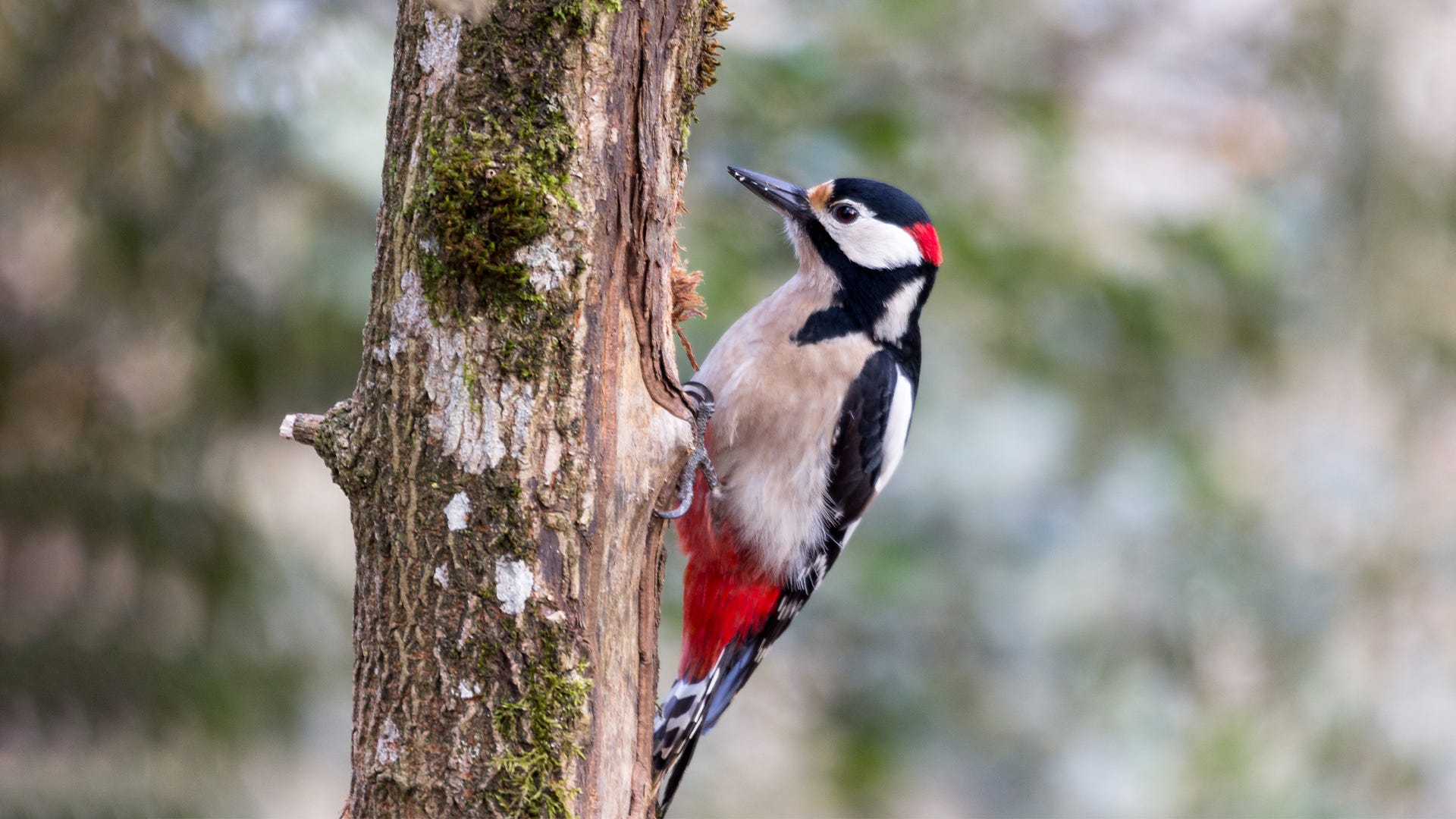Observing Woodpeckers in Florida: Types Diversity and Circulation
Observing Woodpeckers in Florida: Types Diversity and Circulation
Blog Article
Revealing the Tricks of Woodpeckers: Actions, Habitat, and A Lot More
Woodpeckers, with their one-of-a-kind habits and specialized adaptations, have actually long captivated scientists and nature fanatics alike. By discovering the mysteries bordering woodpeckers' actions and environment options, a deeper understanding of these bird wonders emerges, supplying a look right into their remarkable world.
Woodpecker Habits Insights
In taking a look at woodpecker habits, a fascinating display screen of specialized abilities and adjustments arises, clarifying their remarkable environmental niche - Woodpeckers in Florida. Woodpeckers, known for their distinct drumming on trees, have a variety of behavior characteristics that add to their survival and success in their setting. One key actions is their drumming, which offers several functions such as interaction, establishing territory, drawing in friends, and situating food resources. This balanced pecking additionally showcases their impressive strength and endurance, as they can hammer away continually at high rates without triggering harm to themselves.
Additionally, woodpeckers display an unique feeding habits identified by their capacity to essence insects from tree bark utilizing their specialized beaks. Their long, barbed tongues aid in catching victim, while their strong neck muscles offer security and accuracy throughout pecking activities. This feeding technique permits woodpeckers to access surprise insect larvae and remove them with remarkable effectiveness.
Habitat Preferences and Choice
What variables affect the environment preferences and selection of woodpeckers? Woodpeckers are extremely versatile birds recognized to occupy various environments worldwide. However, they do show choices for specific habitat attributes. One essential factor affecting woodpecker environment selection is the schedule of ideal nesting websites. Woodpeckers normally prefer woodlands with a mix of mature trees that offer enough chances for cavity excavation. These dental caries serve as crucial nesting and roosting sites for woodpeckers and are necessary for their reproducing success.
In addition, woodpeckers show a preference for habitats with a bountiful supply of food sources. They are largely insectivorous, feeding on beetles, ants, larvae, and other bugs discovered in worn out wood or tree bark. Woodpeckers have a tendency to favor woody locations with a diverse insect populace to meet their dietary needs.
In addition, the visibility of dead or rotting trees is one more vital factor in woodpecker habitat selection. These trees not only supply food resources yet also use ideal substrate for tooth cavity excavation. Dead trees are essential for the maintenance of healthy and balanced woodpecker populations, as they play an essential duty in the woodpeckers' life process and environment dynamics.
Feeding Practices and Diet Plan Composition
Woodpeckers show a specialized feeding actions concentrated on foraging for insects within numerous habitats. Their diet plan mostly includes insects such as beetles, ants, caterpillars, and crawlers, which they locate by touching navigate to this website on tree bark and listening for the audio of movement inside. Woodpeckers use their strong beaks to drill into the wood and their long, barbed tongues to remove target from gaps. Along with insects, woodpeckers also take in tree sap, fruits, nuts, and seeds, adding selection to their diet depending on the period and schedule of food sources.
The foraging techniques of woodpeckers are well-adapted to their arboreal way of life (Woodpeckers in Florida). Their ability to dig deep into wood not just gives them with food however also helps in developing nesting cavities and establishing regions. Woodpeckers play an essential duty in maintaining the health and wellness of woodlands by regulating insect populaces and assisting in the disintegration of wood. Comprehending their feeding practices and diet composition is important for preservation initiatives targeted at protecting these special and beneficial birds.
Drumming Appears and Interaction
Using rapid drumming sounds on numerous surfaces, woodpeckers use an unique type of interaction to signal territory limits and attract companions. This drumming behavior is not only a way of communication but likewise works as a means for woodpeckers to develop their existence within a specific location. The intensity, rate, and pattern of the drumming can convey essential information to other woodpeckers around.
Woodpeckers use drumming audios to announce their visibility in a region and to advise off prospective intruders. The loud and repetitive nature of the drumming functions as a clear signal to various other woodpeckers that the area is currently asserted. This aids in reducing disputes and decreasing physical confrontations between people.

Survival Adaptations and Specialized Anatomy

Final Thought
In verdict, woodpeckers show distinct habits, such as drumming audios for communication, and have actually specialized anatomy for survival in their picked habitats. Their feeding routines and diet composition additionally demonstrate their adaptability to various environments. By comprehending these facets of woodpeckers, researchers and preservationists can better safeguard and maintain these interesting birds and their environments.
Report this page